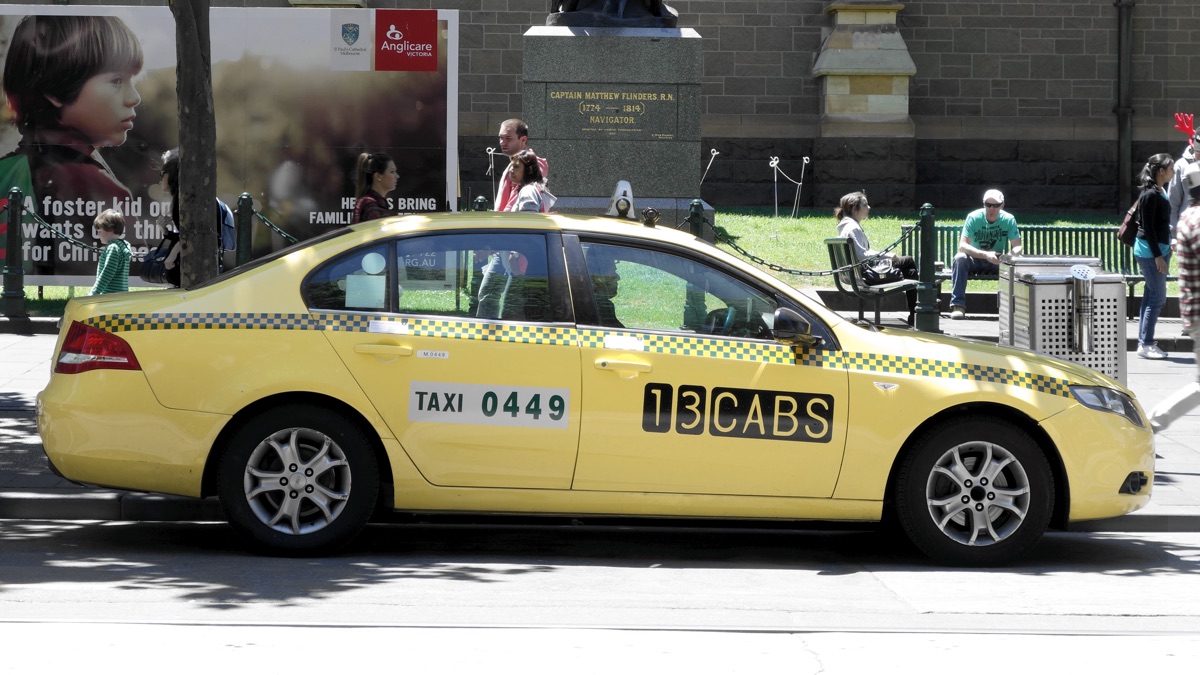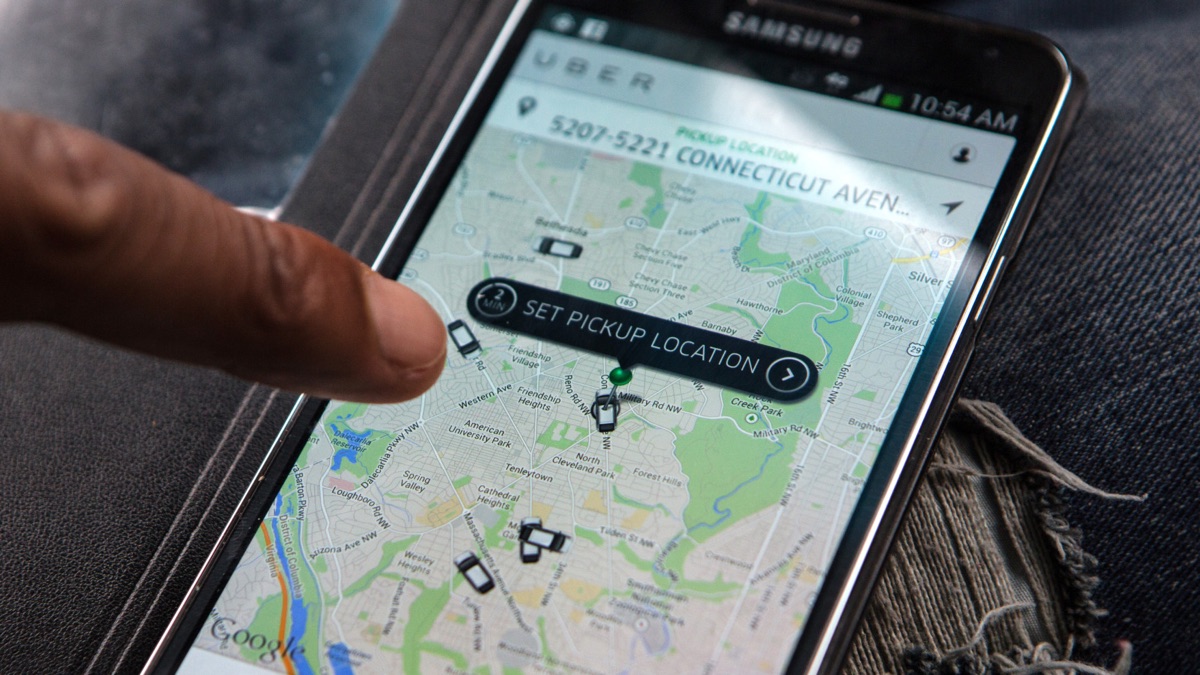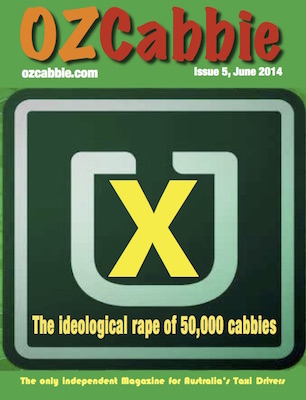I know this is a technology blog and the taxi industry isn’t really “tech”, but the taxi industry is currently going through a blindingly bright example of how technology can rapidly upend the status quo. If you aren’t involved in the taxi industry it’s difficult to get a sense of how smartphone apps, and Uber in particular are seriously rustling some jimmies. To understand why everyone is flipping tables over Uber, you gotta understand what the status quo is.

The Status Quo
In Victoria, the state government decides who can drive who around and the circumstances surrounding people getting in cars as paying passengers. The instrument for government’s tentacles in this area is the Taxi Services Commission. Both drivers and cars are licensed and registered with the TSC. The TSC also enforces the industry related laws by bringing criminal cases against people infringing them.
There’s two ways you can get someone to drive you around Melbourne. A regular taxi with a meter and a sign on it saying “TAXI”, or a hire car which is generally black and fancy, which you’ve pre-arranged. The main difference between the two is that a taxi can be hailed from the street, hang out in taxi ranks and stop in taxi zones. A hire car is supposed to be for pre-arranged travel that’s booked in advance and the fee agreed upon by the driver and passenger.
In order to legally do this, the car needs to have special licence plates that denote it is a licensed vehicle to conduct commercial operation. The TSC regulates this via issuing vehicle licences. Before mid-2014 you had to be part of a booking service (think 13CABS or Silver Top Taxis) in order to get one of these permits and they were only released in limited numbers every few years. The only way to practically get one was to buy it off someone else. As a result the price of permits currently hovers around $300,000. The cost of licences transfers is even tracked on the TSC website. After mid-2014, the TSC offered 60 special permits for owner operators only, for the “low” price of $22,494 per year. This means someone who wants to buy their own taxi (which has to be picked off the official list of vehicles and modified appropriately), can pay and ideally, drive their way to fat stacks of cash money.
The advantage of the $300,000 permits is that you can assign anyone to drive for you. You earn money off it! Let’s say you purchased the plate for $300,000 and rented it out at $2,000 a month (the current assignment rate) to a dude who can’t afford to buy one. That’s $24,000 a year. A sweet investment versus buying a house and renting it, or some shares or a term deposit. The new owner-operator permits can only be used by the person paying the TSC for the permit, so they are not as lucrative from an investment point of view and are designed to encourage owner-operator drivers. Even hire car permits (those VHA and VHB licence plates you see around) are $40,000.
Regardless of who drives it, they need to be accredited by the TSC and get what’s called “accreditation to drive a commercial passenger vehicle and private bus“. This includes a police check, a medical exam by a doctor and passing what’s now called “The Knowledge“. The Knowledge is something London taxi drivers study years for, just check out this documentary about how rigorous it is.
After Victoria’s taxi industry inquiry recommended drivers do something similar, Victoria now has its own version – a computer based test that is supposed to assess not only if the driver knows Melbourne geographically, but also determine if they’re capable giving change properly and if they’re capable of acting polite and not racist (seriously, these are questions asked, check out the examples). It costs $66 per test and hire car drivers just need to do one – taxi drivers need to do three different tests that comprise The Knowledge. Wheelchair taxi drivers need to do four.
You’ve got a permit for your car and your commercial driver’s licence – now you’ve got to find customers. In Victoria, that means hooking up with a dispatch network like 13CABS, Silver Top, CabIt or Crown Taxis. They ask for a monthly fee, and sometimes a cut of your earnings for being part of their network. You also need to accept payments, which pretty much means using Cabcharge’s EFT network and their 5% fee. Oh, and let’s not forget fitting your taxi out to meet all the regulations – which can cost over $3000. Finally, you’re ready to get on the road and be a taxi!
UberX Launches in Melbourne

In May 2014, UberX launched in Melbourne and let anyone with a car sign up and drive people around. No licences, no permits, no special fit-outs. All you need is an iPhone and a car. The hundreds of words I distilled from tens of thousands of fancier legal words of regulation become largely irrelevant. Those super expensive licences people and businesses purchased as an awesome investment – pretty much worthless. The Taxi Services Commission and their balancing act of keeping enough drivers on the road to meet demand versus not flooding the city with taxis and reducing income per car? Totally neutered. Just get in a car, download an app and give 20% of your earnings to Uber. This is a textbook example of disruptive technology. Whether morally or legally correct, it takes a system in place for decades and upends it. Unfortunately this upsets those involved in the previous system.
The conflict between Uber and the taxi industry revolves around the UberX service. Uber has two distinct products in Australia. UberBLACK – a chauffeur service with specific model luxury cars that acts pretty much like a conventional hire car and UberX – just regular dudes in their regular cars giving people a lift. UberBLACK was operating for almost a year before UberX and the taxi industry had no beef with it. It’s just another hire car service with all the restrictions and licensing a hire car service needs to have in Victoria. UberX however was a whole new ball game. Many people with a finger in the taxi pie have reason to be concerned.
The first group of upset people are the taxi licence owners. They paid hundreds of thousands of dollars for that licence, purchased in the hope they’ll make back that investment and then generate a profit. With UberX flooding the market with drivers and gaining popularity, there’s simply less taxi trips taken and as a result, less profit for the licence holder.
Then there’s the drivers. We are familiar with the story of low paid drivers, working below minimum wage, being exploited by the taxi companies. They are already in a shit, relatively powerless position. As Uber takes more of the rides, they are working the same shifts with less passengers, reducing their take home pay. In the USA, as competition increases from services like Lyft & Sidecar, drivers are under the pump to work for less as Uber reduces pricing to attract more customers, resulting in less money for drivers as they’re still only getting 20% of the fare.
Old mates Cabcharge (who have the stickiest finger in this pie, particularly in NSW) don’t like Uber either because it totally removes them from the system. Credit cards surcharges are included in the price of Uber trips so no need for their exorbitant fees. The various taxi associations, insurance co-operatives, fit-out services, radio booking systems and licence brokers also dislike Uber as their services become practically worthless too.
Unsurprisingly, Uber really pisses the taxi industry off. When someone threatens your livelihood, you react and the ways the taxi industry in Victoria has reacted is quite bizarre.
Oz Cabbie is a trade mag for taxi drivers. It’s a knockabout rag for normal blokes who love a laugh (and getting kickbacks from strip clubs – pg 11, March 2014) and is probably quite representative of the average driver. When Uber entered the Australian market, Ozcabbie run a paid ad (page 7, July 2013) from Uber, recruiting taxi drivers.
 But after UberX launched, every single issue is filled with articles portraying Uber in the most negative of fashions. In their July 2014 issue, just a year after taking their ad money, Uber now is referred to as terrorists no less than 4 times. On the cover of the June 2014 issue, Uber are called “ideological rapists”. Even more “official” mags for taxi drivers, like Taxi Talk (published by the Victorian Taxi Association) and METER (the NSW Taxi Council) have the majority of their content in the past year related to negatively portraying Uber or explaining how they plan to combat UberX.
But after UberX launched, every single issue is filled with articles portraying Uber in the most negative of fashions. In their July 2014 issue, just a year after taking their ad money, Uber now is referred to as terrorists no less than 4 times. On the cover of the June 2014 issue, Uber are called “ideological rapists”. Even more “official” mags for taxi drivers, like Taxi Talk (published by the Victorian Taxi Association) and METER (the NSW Taxi Council) have the majority of their content in the past year related to negatively portraying Uber or explaining how they plan to combat UberX.
There’s Russell Howarth in Sydney, who infamously started conducting citizen’s arrests of Uber X drivers. He’d order a car via the Uber app, ask the drivers if they have the right accreditation and if they answered no, demanded to be driven to a police station and proceed to “arrest” them. The police were confused and didn’t do anything, but Russell did get attention. He’s even started a website called ArrestingUber where he details each of his arrests.
The taxi booking companies are of course rallying against UberX, with Crown Cabs being one of the more prolific campaigners on Twitter for using an “Accredited Taxi Booking Service” and the Victorian Taxi Association launching #TaxiTrippin – the digital equivalent of Mr. Burns dressing up as a child and attending Springfield Elementary in order to learn the secrets of the young.
UberX is a Thing – Now What?
Despite the taxi industry getting a little weird with their defensiveness, they have a point. UberX is illegal in Victoria. It’s pretty clear cut. The law says that the driver needs to have “Commercial Passenger Vehicle and Bus Driver Accreditation” and the car needs a permit, either a hire car one or a taxi one. UberX drivers have neither of these. Some may obtain the right accreditation as getting it isn’t very expensive (about $150) and just requires getting a medical exam and filling in a form. But UberX cars do not have the right hire car or taxi permit.
The Taxi Services Commission have begun criminal proceedings against 12 UberX drivers, starting with Nathan Brenner. There is little detail around about this case, but it is being heard on the 23rd of March, 2015. If the judge decides Nathan was breaking the law, that has some large ramifications for Uber and UberX drivers. Will UberX drivers quit in fear of getting hauled before the Magistrate’s Court? Will Uber simply pay the fines indefinitely? Maybe Uber will just stop offering UberX in Victoria and stick to UberBLACK?
Like any disruptive technology, its existence brings more rhetorical and debatable questions to the foreground. In the case of Uber – what exactly is taxi regulation good for? Why does it exist? Who’s interest does it serve? UberX drivers can be made to get the commercial vehicle accreditation easily enough, but the right permit would make UberX prohibitive. Do we scrap these permits? What about insurance for UberX drivers currently not covered by private car insurance? As Uber aggressively expands, these are the sort of questions regulators and governments need to ponder and the type of questions the status quo will respond to with answers that suit them. At the end of the day though, technology always wins against a loathed, slow to respond incumbent. It’s only a matter of time.
[optin-cat id=5772]